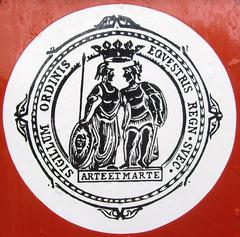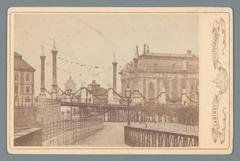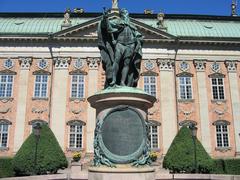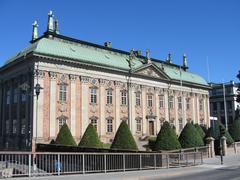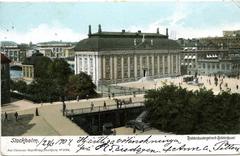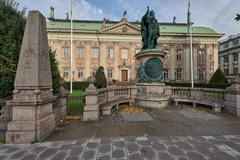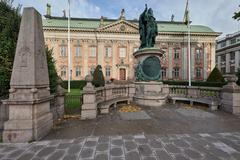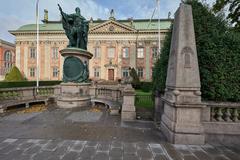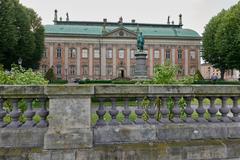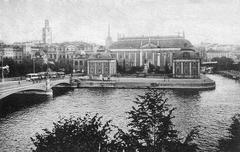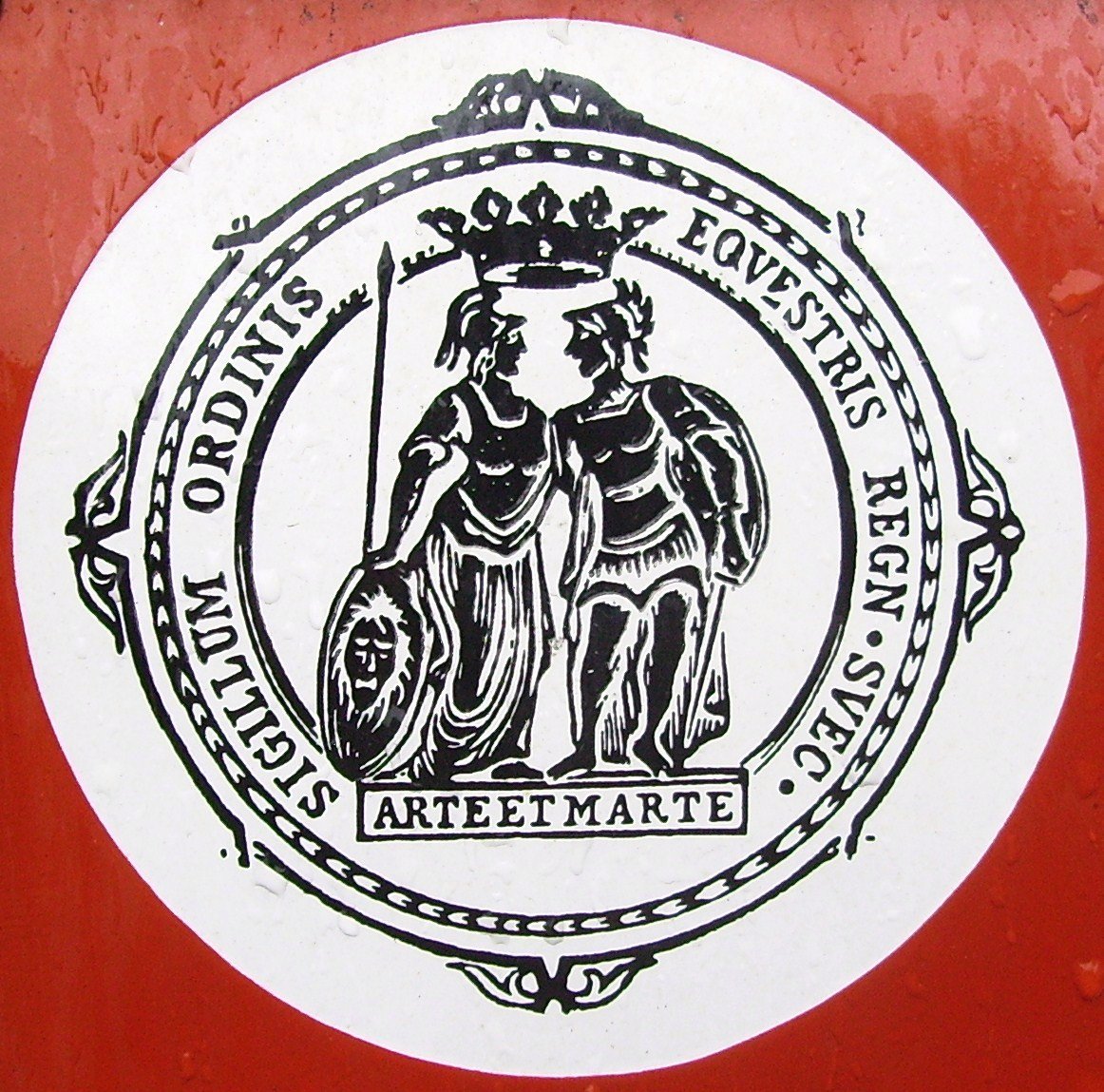
Visiting the Swedish House of Nobility (Riddarhuset), Stockholm: Complete Guide with Tickets, Hours, and Tips
Date: 14/06/2025
Introduction
The Swedish House of Nobility—locally known as Riddarhuset—is an iconic landmark in Stockholm, celebrated for its Renaissance-Baroque architecture and its pivotal role in Sweden’s aristocratic and political history. Established in 1626, it originally served as the assembly house for the noble estate within Sweden’s Riksdag of the Estates. Today, Riddarhuset stands as a powerful symbol of Swedish heritage, welcoming visitors to explore its ornate interiors, vast genealogical archives, and vibrant cultural program, all in the heart of the historic Gamla Stan district (Swedish Press; Visit Stockholm).
This guide covers everything you need to plan your visit: from historical background and architectural highlights to hours, tickets, accessibility, guided tours, and travel tips.
Table of Contents
- Historical Overview
- Riddarhuset’s Role in Swedish Society
- Architectural Features
- Visiting Information
- What to See Inside
- Nearby Attractions & Travel Tips
- FAQ
- Conclusion & Recommendations
- Sources
Historical Overview
Origins and Construction
Riddarhuset’s history is rooted in Sweden’s “Great Power Era” (Stormaktstiden), when the nobility played a dominant role in national affairs. The building’s construction began in 1641 under the direction of the French architect Simon de la Vallée, who was succeeded by his son Jean after Simon’s tragic death. The palace was completed in 1672, with contributions from European masters including Justus Vingboons. Its architectural style blends French and Dutch Baroque influences, as reflected in the symmetrical façade, decorative statuary, and heraldic displays (Spotting History; Wikipedia).
Political and Cultural Role
From the 17th to the mid-19th centuries, Riddarhuset served as the parliamentary chamber for the noble estate in Sweden’s Riksdag of the Estates. This period saw the building host important legislative debates and cultural gatherings, including performances by the Royal Court Orchestra and appearances by both Swedish and international artists (Routes North; Berloga Workshop).
With the transition to a bicameral parliament in 1866, Riddarhuset shifted from political power to a modern role as a guardian of noble traditions and genealogical records. Today, the Assembly of Nobles, representing hundreds of living noble families, continues to oversee the building’s assets and cultural mission (Riddarhuset Official).
Riddarhuset’s Role in Swedish Society
Since 2003, Riddarhuset has functioned as a private institution. Its governance is outlined in the Riddarhus Decree, with a triennial Assembly of Nobles as its highest authority. The institution maintains extensive archives and supports cultural initiatives, scholarships, and charitable activities through the management of historic estates and properties (Riddarhuset Official; Swedish Press).
Architectural Features
Exterior
Riddarhuset’s exterior is a masterpiece of Northern European Baroque, with a brick and sandstone façade, copper-clad roof, and classical statuary. The main entrance displays the Swedish national coat of arms and allegorical figures symbolizing virtues such as Justice and Prudence. The Latin motto “CLARIS MAIORUM EXEMPLIS” (“After the clear example of the forefathers”) encapsulates the building’s ethos (worldcityhistory.com).
Interior
The Great Hall (Riddarhussalen)
The heart of Riddarhuset is the Great Hall, lined with over 2,300 coats of arms representing Sweden’s noble families. The hall features a grand chandelier, ornate parquet flooring, and an elaborately painted Baroque ceiling. Portraits of key statesmen, heraldic shields, and antique furnishings showcase the craftsmanship and artistry of the era (Visit Stockholm).
Reception Room and Chancellery
The reception room displays portraits of 19th-century land-marshals. The staircase hall houses Baron Gustaf Cederström’s renowned painting of King Carolus X Gustavus’s crossing of the Great Belt. Upstairs, the Blue Room exhibits a unique collection of noble family china (Riddarhuset official site).
Visiting Information
Hours and Tickets
- Standard Hours: Monday–Friday, 11:00 am–12:00 pm (except public holidays)
- Summer (June 23–August 8): 10:00 am–1:00 pm
- Admission: Adults 60 SEK; students/seniors 40 SEK; children under 12 free (cashless payment only)
- Cultural Evenings: Free admission, with lectures in the Great Hall (see events calendar)
- Closures: Riddarhuset is closed for renovations until December 2025; always check the official site for updates (Riddarhuset Opening Hours).
Accessibility
Due to its 17th-century design, accessibility is limited. There are no elevators, and wheelchair access is very restricted. For assistance, contact Riddarhuset in advance (Riddarhuset Accessibility).
Guided Tours and Events
Guided tours (in English and German) offer in-depth exploration of history and heraldry:
- Weekdays (09:00–17:00): 1,200 SEK/group (+ entrance fee per person)
- Evenings/weekends: 2,000 SEK/group (+ entrance fee)
- Advance booking required: [email protected] | +46 8 723 39 97 (Riddarhuset Guided Tours)
Special events—chamber concerts, lectures, and exhibitions—are held regularly in the Great Hall (Riddarhuset events page).
What to See Inside
- Great Hall: Marvel at the historic coats of arms, heraldic copper plates, and grand Baroque design.
- Reception Room & Staircase Hall: Portraits of land-marshals and Cederström’s famous painting.
- Chancellery & Blue Room: Explore rare noble family china and genealogical archives.
- Peerage Book (Adelskalendern): Consult detailed records of Sweden’s noble lineages.
Nearby Attractions & Travel Tips
Riddarhuset is perfectly situated for exploring Gamla Stan and nearby Stockholm landmarks:
- Royal Palace: One of Europe’s largest palaces.
- Storkyrkan (Stockholm Cathedral): Stockholm’s oldest church.
- Nobel Prize Museum and Riddarholmen Church: Key sites within walking distance.
- Travel Tips:
- Use the SL app for public transport (One Day Itinerary).
- Book guided tours early, especially in summer.
- Photography is allowed (no flash/tripods).
- No formal dress code, but respectful attire is recommended.
- Most staff speak English; tours in English and German.
FAQ
Q: Is Riddarhuset currently open to visitors?
A: Riddarhuset is closed for renovations until December 2025. Always check the official website for the latest updates.
Q: How do I buy tickets?
A: Tickets are purchased on-site (cashless only). For guided tours, book in advance via email or phone.
Q: Is the building wheelchair accessible?
A: Accessibility is very limited; contact Riddarhuset ahead of your visit for details.
Q: Are guided tours available?
A: Yes, in English and German by advance booking.
Q: What is the best time to visit?
A: May–September for extended hours and good weather; winter visits offer a unique atmosphere.
Conclusion & Recommendations
The Swedish House of Nobility (Riddarhuset) is a must-visit for anyone interested in Swedish history, architecture, and culture. Its majestic halls, rich heraldic collections, and central location in Gamla Stan make it an unmissable stop on any Stockholm itinerary. Due to ongoing renovations, always verify current visiting hours and ticketing options before arrival.
For up-to-date information, itinerary planning, and insider recommendations, download the Audiala app and follow us on social media.
Sources
- Swedish Press
- Visit Stockholm
- Riddarhuset Official Site
- Berloga Workshop
- Spotting History
- Wikipedia
- worldcityhistory.com
- Routes North
- One Day Itinerary
- Nomad Epicureans
- Lonely Planet
